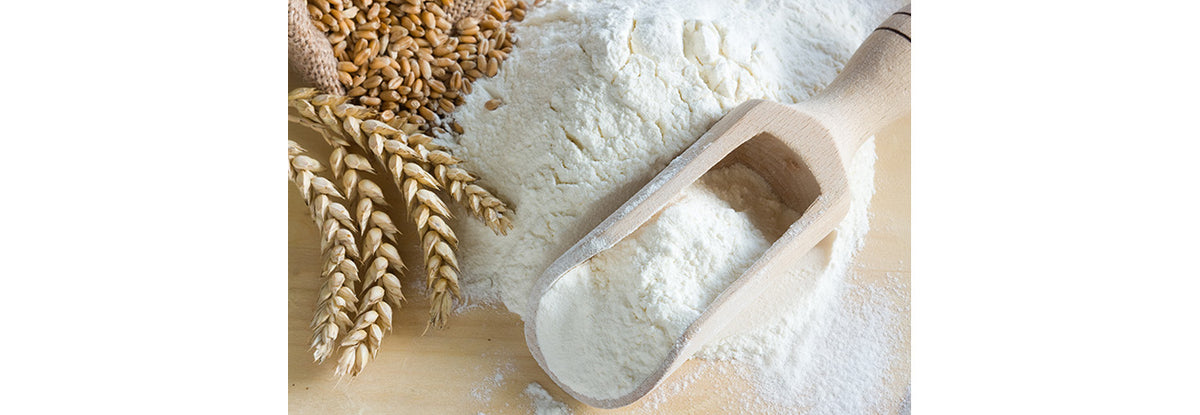The Difference Between Carbs

Carbs are getting a bad rap these days. While it’s not completely undeserved, we understand that it’s not usually as simple as a blanket “bad” or “good” statement anymore. With the variety of allergies and/or dietary preferences, the amount of do’s and don’ts can get pretty overwhelming, pretty quick.
Which brings us to the forefront of the carb quandary. What makes a good carb good, and vice versa?
Whole grains provide a certain amount of benefit to the digestive system, but then they have the potential to increase blood sugar levels, taking you out of ketosis. Fine ground grains for flours certainly have their drawbacks. Heck, even some vegetables can be bad for you if you have certain disorders. So what gives?
We need carbs to survive. They are an essential macronutrient. So we’ve got to figure this out, right?
First, let’s start off with the understanding that there are two major different categories of carbs. Simple carbs versus complex. Check out our blog, “Why Low Carb is Important” to get a good picture of the difference.
We’re going to start looking at the different carbs, starting with the category Simple.
Sugar, basically. If it has an “ose” at the end of it, it’s a simple carb more commonly known as sugar. Dextrose, maltose, sucrose, fructose, etc. These are the worst kinds of carbs (we’re comfortable with that blanket statement) since they offer anywhere from zero to close-to-zero nutritional benefits and only spike your blood sugar levels, contributing to a myriad of disorders.
Foods Containing Sugar. Should be obvious, but this little molecule finds its way into many different products. There are the assumed foods (see: anything sweet) and then there are the inconspicuous ones. For example, a loaf of whole grain bread – whole grains being complex carbs – may still contain a large amount of sugar, often in the form of added sugars. Which is literally what it sounds like. A honey loaf of bread is added sugar - honey containing the simple carb pairing of glucose and fructose. To be fair, honey has the benefit of minerals, but it is still technically sugar. However, because of the minerals taking up the room that sugar molecules otherwise would, it doesn’t spike blood sugar levels as table sugar would. See how tricky this is already getting?
We’re only now getting to the Complex Carbs.
Anything that is fiber is a complex carb. Often times, foods can be both complex and simple. Fruit is the best example. Fruit contains glucose, as well as fiber. Fiber is exactly what you think it is – the not-juice part. The pulp. Fiber passes through the digestive tract, cleaning out the gunk, and actually helps control blood sugar levels. Sometimes that comes with the price of a bit of sugar, but that’s not always a bad thing, depending on the kinds of sugars. Remember the honey example? Not a terrible source of sugar, at least in comparison as well as in moderation. If your carb is 90% fiber and 10% sugar and you’re eating a very modest amount, you’re doing pretty alright. Depending on the food you choose, it may or may not help keep you in low carb mode, but you’ve got a good ratio nonetheless.
Oh, but wait.
Then there’s Starch.
Because we needed to have more to think about.
Diabetes.org has a great explanation of the components of a grain (where the starch is) so rather than trying to simplify their version that’s already pretty straightforward, here’s what they have to say:
“The bran is the outer hard shell of the grain. It is the part of the grain that provides the most fiber and most of the B vitamins and minerals.
The germ is the next layer and is packed with nutrients including essential fatty acids and vitamin E.
The endosperm is the soft part in the center of the grain. It contains the starch. Whole grain means that the entire grain kernel is in the food.
If you eat a whole grain food, it contains the bran, germ, and endosperm so you get all of the nutrients that whole grains have to offer. If you eat a refined grain food, it contains only the endosperm or the starchy part so you miss out on a lot of vitamins and minerals. Because whole grains contain the entire grain, they are much more nutritious than refined grains.”
This is why there are different flours from the same carb source. A good example is the Yuca root. You can get two flours from this plant: Cassava and Tapioca. Cassava is the more nutritious and wholesome flour. Tapioca is the starch derived from the Yuca root. The two flours have a different process they go through to end up in their desired state.
Think potato flour versus potato starch. Cornmeal versus cornstarch. You get the point. The more “whole” flour is better nutritionally because it contains the vitamins and/or minerals that the starch is lacking. Some wheat flours are actually better than others because they contain more of the bran and germ as mentioned above. However, they also contain less gluten (still has gluten though) which makes them less ideal for certain baking endeavors.
So then, what counts as a good carb?
- High nutrient profile
- High fiber
- Lacks or is low in sugar
- Does not contain harmful molecules that cause any sort of allergic reactions
In general, this means vegetables, legumes, root vegetables, nuts, fruits, and seeds.
Each of these categories of food will have their different qualifications for what is considered a healthy carb for you personally. To list out all the details of each would take a book, so we’ll give an example of each.
Vegetables. Cruciferous veggies are almost always a good choice because of their nutrient and fiber content. On the flipside, nightshades (tomatoes, eggplant, etc.) are not good for people with an autoimmune disease.
Legumes (beans). Most beans are high in fiber and protein. Lentils, in particular, have the highest amount of phytonutrients which helps protect against stress-related diseases such as high blood pressure and inflammation. However, beans contain the protein lectin, a controversial molecule that has been known to disrupt the cell’s functions. The good news is that lectins can be reduced or eliminated simply by cooking the beans. In fact, our new Penne pasta contains lentils and has been thoroughly cooked for this very reason!
Root Vegetables. Think potato. Who doesn’t love those? Unfortunately, potatoes are high in starch and any other root vegetable that isn’t high in starch is low in good flavor. It’s for this reason that even though a potato is technically a type of paleo-esque scavenger unprocessed food, it’s not on the paleo “do” list. Excepting, however, the sweet potato. Why is that? The sweet potato contains a serious pack of nutrients, namely the anti-oxidant beta-carotene, which gives it that unique orange color.
Nuts. Not to be confused with peanuts, which are actually a type of moldy legume and not a nut at all. Nuts are generally high in the good fat, but of course, they are one of the most common food allergy sources as well. If you’re not allergic and want a good carb, go for the tree nuts. They have the highest nutritional profile.
Fruits. Everyone knows that oranges are high in vitamin C. They are also high in fructose. The best fruits to eat are actually berries since they contain the lowest amounts of sugar and the highest amount of anti-oxidants.
Seeds. Who can say anything bad about seeds? Not only are they tiny which makes it hard to overeat, but they’re always good for you. Right? Well, not if you’re on the Auto-immune Protocol (AIP) diet. To be fair, it’s not that seeds aren’t good for you. Seeds are actually high in vitamins and minerals that many other foods are not. However, according to AIP guidelines, you should steer clear for the simple fact that you might be allergic and not know it. After the first phase of AIP, you can start reintroducing seeds under the caution to pay attention to how you react to them. If you react well, then have at it! If not, you’re allergic! Seeds are a fascinating subject, so if you’d like to read more about what’s going on we suggest this article from The Paleo Mom: https://www.thepaleomom.com/the-whys-behind-the-autoimmune-protocol-nuts-and-seeds/?cn-reloaded=1
That about sums it up! This was a long one, so thanks for sticking in there! We hope it helps you on your way to understanding your own bio-individuality so you can make better decisions for yourself, specifically.
https://www.thepaleomom.com/the-whys-behind-the-autoimmune-protocol-nuts-and-seeds/?cn-reloaded=1
https://www.saga.co.uk/magazine/health-wellbeing/diet-nutrition/nutrition/health-benefits-seeds
https://blog.bulletproof.com/my-flood-story-and-what-to-do-about-mold/
https://www.bbcgoodfood.com/howto/guide/health-benefits-sweet-potato
https://www.livescience.com/62914-what-are-lectins-plant-paradox.html
http://www.berkeleywellness.com/healthy-eating/food/article/types-wheat-flour
https://www.medicalnewstoday.com/articles/317728.php
https://diet.lovetoknow.com/wiki/Other_Names_for_Sugar_on_Food_Labels
https://www.pcrm.org/health/diets/recipes/complex-carbohydrates-vs-simple-carbohydrates




Leave a comment